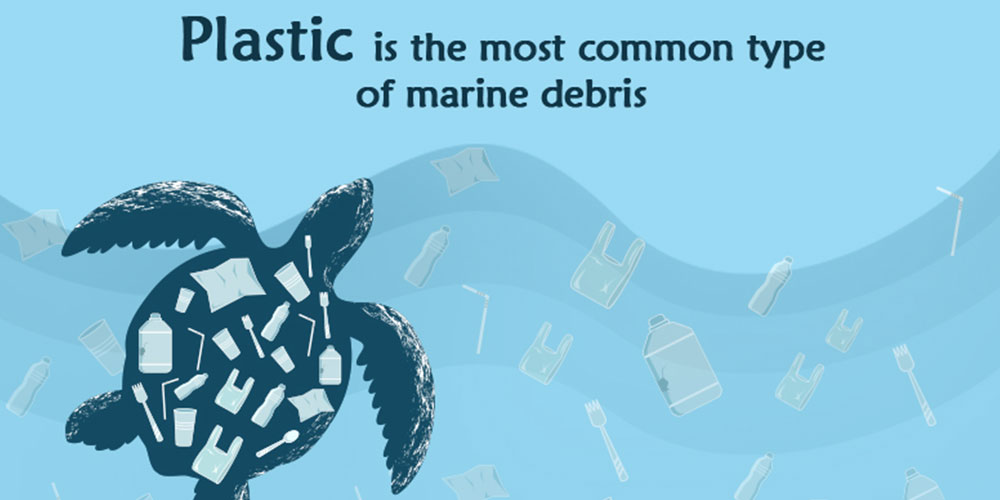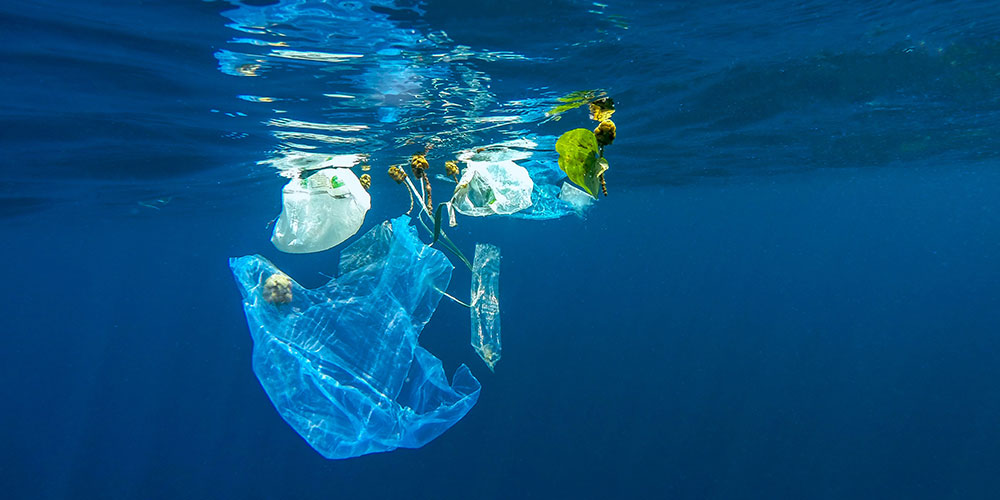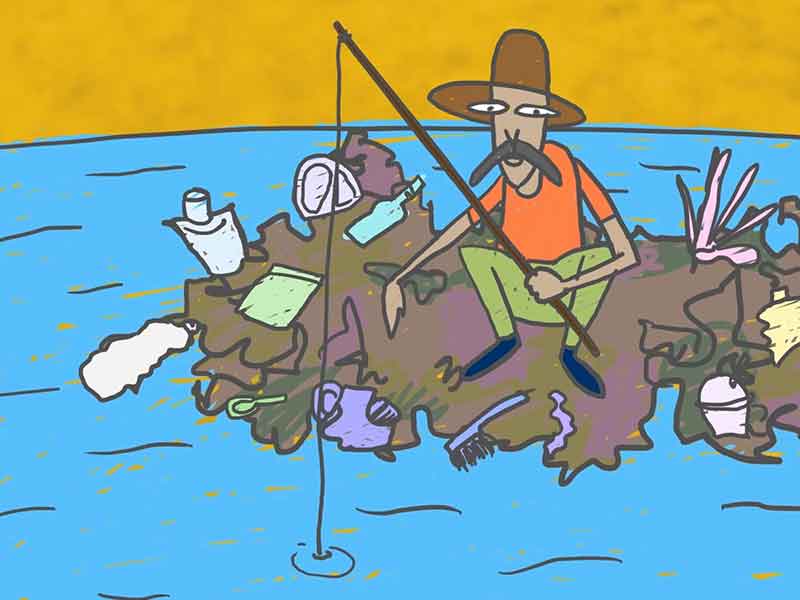Marine litter is a major issue in the coastal areas of South Asian countries.

The South Asian Seas region includes the Indian Ocean in the South, the Bay of Bengal in Southeast, and Arabian seas in South-west bordering Bangladesh, Maldives, India, Sri Lanka, and Pakistan. The SAS region is highly endowed in ecological diversity including estuaries, river deltas, lagoons, mangrove forests, coral reefs, sea-grasses, and coastal wetlands that support and provide diverse habitats to many species. The region hosts 15% of the world’s total flora and 12% of the global fauna, that is threatened by pollution as it is the most densely populated region, including a quarter of the world’s population, i.e. about 1.8 billion people [1],[2]. These developing nations, with high population density and low income, are low on development indicators, and greatly dependant on natural resources[3]. The pollution caused by each country is unique and depends on the type of development activities in that country, population size, income, and type of industry, etc.
Marine litter/debris is solid waste that enters the waterways either directly through dumping or indirectly by beings washed out into streams, rivers, and seas. It is created by humans and discharged into coastal or marine environments, resulting from activities on land or at sea[4]. A major source of marine debris and waste can be attributed to land-based pollution, which includes pollution from municipal solid waste. The debris items can broadly be divided into macro-debris (>20 mm diameter), meso-debris (5–20 mm) and micro-debris (<5 mm) [5]. Plastic is a major source of this pollution, at least 8 million tons of plastic leak into the oceans every year[6]. There is over 150 million tons of plastic waste in the oceans today, and without significant intervention, there could be more plastic than fish in the seas, by weight, by 2050[7]. Other persistent materials discarded into the sea include metal, lumber, glass, rubber, styrofoam, cloth, foam rubber, etc.
The solid waste generated in the SAS region is from a domestic and industrial source, including hospital waste. The quantity of solid waste generated by the SAS Region is estimated at about 70 million tonnes per year (about 0.12-5.1 kg/person/day)2. The waste is mostly composed of paper, plastics, and biodegradable matter[8]. In Bangladesh, India, Pakistan and Sri Lanka, only a fraction of the solid waste generated is collected while the rest is dumped in open areas. This waste eventually finds its way into the coastal waters during the rainy season, via rivers, streams, and mangrove swamps which are used as dumping sites.
Solid waste is also dumped directly into the sea from shipping, commercial fisheries, and other offshore activities. As per UNEP/GPA (2005) assessment, the ship-generated waste accounts for nearly 80% of the solid waste in the coastal and marine areas3. Although disposal of solid waste by ships is regulated by Annex V of the MARPOL 73/78 convention, requiring countries to provide port reception facilities for ship-generated wastes. However, the SAS countries lack facilities to deal with ship-generated waste and instead dispose solid waste into the sea from where it is transported by wind and currents to the shore, often far away from the country/source of origin.
The status of solid waste generated in each of the five SAS nations is captured below:
- Bangladesh
The waste generation in Bangladesh is about 22.4 million tonnes per year (2012), with waste generation rate of 150 kg/cap/year[9]. Waste composition shows that the majority of the waste generated is organic. It is expected that by 2025 the number of wastes produced will be 47,064 tonnes and waste generation rate will be 220 kg/cap/year. The cities and human settlements in the coastal areas do not have domestic waste treatment facility effluents are either directly or indirectly are discharged untreated into the rivers and finally into the Bay of Bengal. Major polluting coastal cities include Chittagong (~480 TPD of solid waste by ~2.5 million people ends up in the Karnaphuli River) and Khulna city that generates large amounts of solid and liquid waste from industrial and medical college. In 2000, an estimate of about 120-130TPD was generated in Khulna city[10]. Dhaka, the capital and the largest, most populous city, although far away from the coast, contributes to coastal pollution by generating large amounts of domestic sewage and solid wastes, that enters the Buriganga river, which flows into the Bay of Bengal. In Dhaka, over 60,000 M3/day of untreated industrial toxic waste is discharged into the river from industries[11]. - India
Solid waste generation by metropolitan coastal cities in India ranges from (1,680-11,000)TPD[12]. The solid waste generated 121 coastal cities and towns is partly disposed of in landfill sites, partly dumped openly and partly converted into compost. These 121 cities and towns generate over 8,914TPD of which nearly 70 % is not collected[13]. Major industrial cities and towns of the country such as Surat, Mumbai, Kochi, Chennai, Visakhapatnam, and Kolkata are situated on or near the coastline. Mumbai city discharges an estimate 2200 MLD of waste into the coastal waters. The status of marine debris in India varies from place to place, the varying information collected explains the diversity of the problem. There is no overall focus to address this problem at the national level, except for a small but significant effort taken by NGOs and voluntary groups. - Maldives
About 860TPD of waste is discarded in Maldives out of which 21% is attributed to tourism (134TPD from 101 resorts and 8TPD from 157 boats) and the remaining 65% to urban communities and 35% to island communities[14]. Traditionally, the solid waste generated was organic however, now with development and imports the nature of waste has changed to include non-biodegradable items such as plastics. Non-biodegradable waste is dumped near the beach in many islands and buried in a few islands. Waste from resorts includes food waste, is dumped into the ocean. Combustible waste including components including garden/yard trash and paper products are incinerated. Bottles and glass are crushed to reduce the volume and sent for disposal or used in construction. From island communities, waste is either collected by a private operator or taken by households to Island Waste Management Center (IWMC). Many such centers exist however, there is no mechanism to pick up waste from these centers and residents instead discard waste on beaches. - Pakistan
In Pakistan, about 20 million tons of solid waste is generated annually, with an annual growth rate of about 2.4 percent[15]. Although Pakistan is the only SAS region to have signed the London Convention on the Prevention of Marine Pollution by Dumping of Wastes and Other Matter in 1972, ocean pollution is a huge problem in the country. According to the Karachi Municipal Corporation, the city collects and disposes of about 20-30% of the 8000-10000 tonnes/day solid waste generated, however, in reality, this figure is reported to be a gross overestimation[16]. The remaining, uncollected garbage either remains in the city or thrown near the riverbeds, which finally end up into the sea and can be seen as marine debris at certain locations of the coast. The main problems as perceived by households related to waste included littering openly in the drain or road, and absence of dustbins[17]. - Sri Lanka
The island country generates about 6000-7000 TPD solid waste[18]. Rate of waste generated is 721g/person/day. Overall waste collection is low at about 50% and the collected waste ends up in open dumpsites leading environmental health issues. Marine litter in Sri Lanka are found along the beaches and shores, on surface water, in the water column, on the seabed, and estuaries[19]. 90% of marine litter in Sri Lanka is from land-based sources and 10% from the sea[20]. Marine litter can be transported far away but it is also found at the mouth of the source or source input as seen in Kelani Ganga river mouth, and Wellawatte and Dehiwala canal outlets in Colombo. The Maritime Environment Protection Authority plays a role in controlling pollution in Sri Lanka’s 1640 km coastal belt and extending up to 200NM, which starts with controlling inland pollution.

In conclusion, in the SAS coastal region, poor solid waste management has resulted in marine pollution. Some reasons attributed to poor waste management include managerial issues such as non-compliance with rules set by municipalities and pollution control boards, lack of awareness on best practices, infrastructure issues such as lack of proper waste collection and storage, open dumpsites, and open garbage trucks all contributing to leachate entering the water systems resulting in accumulation of marine debris.
The quantification and reporting of marine debris are comparatively poor, and data collected does not follow a reliable and consistent methodology but is instead lies in the form of reports prepared by different groups[21]. Marine litter/debris now has become a serious issue due to lack of knowledge on quantities of debris, its effect on the marine environment, and lack of environmental awareness. In addition to this, the life cycle of marine debris in the oceans is unknown due to lack of data on various sources of pollution, spatial and temporal variability affecting marine debris and variability in its distribution. It is important to follow a standardized scientific monitoring protocol for this debris to understand its life cycle at a local, national, and global level. Standardized monitoring protocols are needed to assess the implementation of existing regulations and standards. Cooperation and collaboration at the local, regional, national and international level along with an increase in public awareness generation and ecological consciousness are necessary to curb marine pollution. The solution to coastal pollution and marine litter is likely to be found in a transition towards more sustainable ways of production and consumption as promoted by the Sustainable Development Goals (SDGs).
Moving forward the focus is now on cleaner oceans. For example, Government of India as a part of the World Environment Day in 2018 committed to establishing a national and regional marine litter action campaign as well as a program to measure the total marine plastic footprint in India’s coastal waters. Local interventions by NGOs and community groups are demonstrating that a multifaceted approach to urban solid waste management is effective and cost-efficient[22]. With the Swachh Bharat Movement, some urban local bodies have effectively applied best practices to solid waste management and become examples for the rest of the country to follow. Coastal cities of Surat, Gujarat and Panaji, Goa have shown how best management practices, when implemented correctly, can clean cities efficiently and thereby lead to lesser pollution in water bodies and coastal regions[23].
References:
[1] SACEP 2017
[2] http://www.sacep.org/pdf/General-Publications/2017.05-SACEP-Leaflet.pdf
[3] Marine Litter in the South Asian Seas Region, 2007
[4] UNEP, N. (2011). Retrieved from UNEP, NOAA: Honolulu Strategy. 2011.
[5] Thompson, R. C., Moore, C. J., Vom Saal, F. S. and Swan, S. H., Philos. Trans. R. Soc., London, Ser. B, 2009, 364, 2153-2166.
[6] Jambeck et al. 2015
[7] Ocean Conservancy, 2015
[8] UNEP/GPA, 2005
[10] BUET, 2000
[11] http://www.uncrd.or.jp/content/documents/4288Presentation-Sinha-PS-7.pdf
[12] https://cpcb.nic.in/trend-of-solid-waste-generation-in-46-cities/
[13] http://www.sacep.org/pdf/Reports-Technical/2007.09-Marine-Litter-in-the-SAS-Region.pdf
[16] SACEP 2017
[18] http://documents.worldbank.org/curated/en/972591525333833635/pdf/SFG4315-EA-REVISED-PUBLIC-disclosed-7-24-18.pdf
[19] https://www.boblme.org/documentRepository/BOBLME-2011-Ecology-14.pdf
[20] Prematunge, S. (2009). “Earth Hope”. [Accessed 5 January 2012].
[21] https://www.currentscience.ac.in/cs/Volumes/110/07/1153.pdf
[22] Venkatesan, 2007
[23] Not in my Backyard: Solid Waste Management in Indian cities by Sunita Narain and Swati Singh Sambyal


